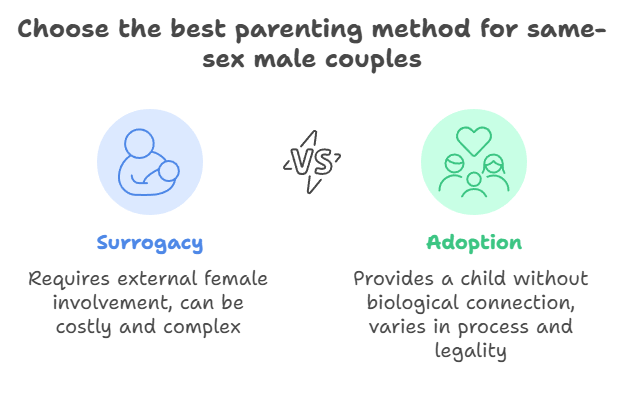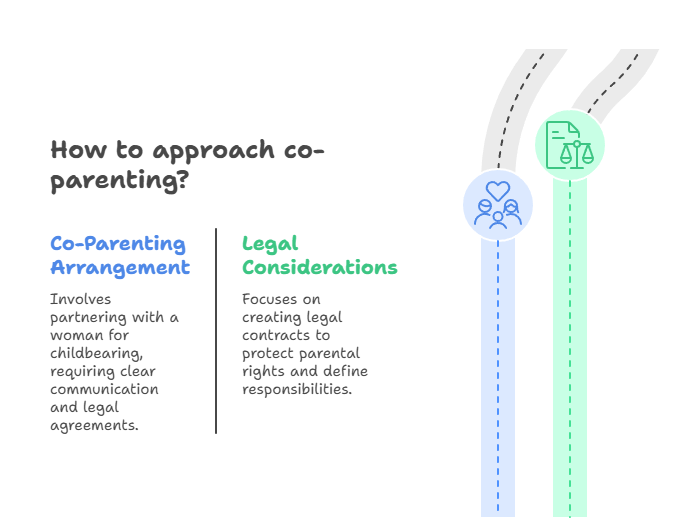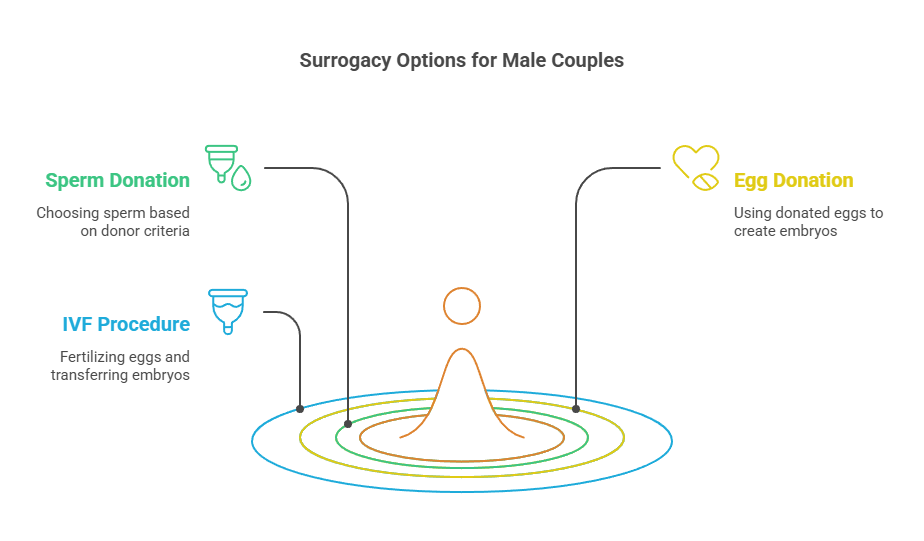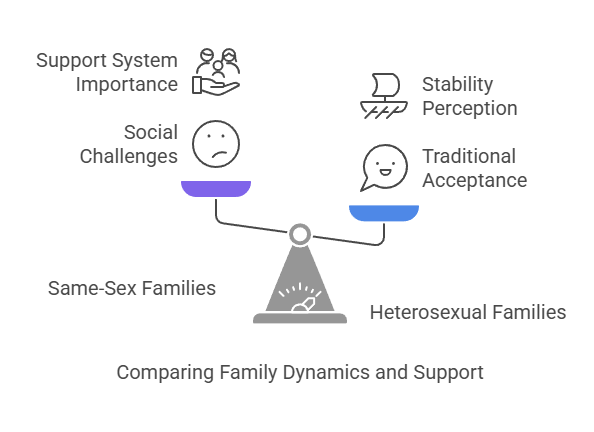The question “Can two men have a baby?” has become more common as society has made strides toward accepting same-sex couples and their desire to build families. For same-sex male couples, the journey to parenthood may seem complicated, but it’s not impossible. While they cannot biologically conceive a child together in the traditional sense, there are multiple paths they can explore to become fathers and raise children in a loving home.
In this article, we will discuss the various options available to same-sex male couples, including surrogacy, adoption, co-parenting, and the role of modern technology in making parenthood a reality.
I. The Biological Challenges for Same-Sex Male Couples
A. The Role of Genetics in Reproduction
In a typical biological process, reproduction involves the union of a male sperm cell and a female egg. For two men, this biological process isn’t possible without the involvement of a female, either through surrogacy or adoption.
While male couples can’t naturally produce a child together, they still have many other ways to be part of the parenting process. The key challenges they face revolve around the need for external help—either through a surrogate mother or adoption.

II. Surrogacy: The Most Common Path for Same-Sex Male Couples
A. Gestational Surrogacy
Gestational surrogacy is the most common path for male couples wanting to have a biological child. In this arrangement, one of the men’s sperm is used to fertilize an egg, which is then implanted into the surrogate mother’s uterus. The surrogate carries the child to term but has no genetic relationship to the baby, as the egg typically comes from an egg donor.
Surrogacy allows the male couple to be biological parents. One of the men provides the sperm, and the other may legally adopt the child if necessary.

B. Traditional Surrogacy (Less Common)
In traditional surrogacy, the surrogate uses her own egg, and the sperm from one of the intended fathers is used to fertilize it. This means the surrogate is genetically related to the child. While this route is less commonly chosen, it’s still an option for male couples.
Traditional surrogacy, however, comes with additional legal and emotional complexities, as the surrogate is the biological mother. Most male couples prefer gestational surrogacy because of its legal clarity.
C. Cost and Legal Considerations
Surrogacy is often the most expensive option for same-sex couples. In Texas, the total cost of surrogacy typically ranges between $100,000 and $200,000. This includes surrogate compensation, medical fees, agency fees, legal expenses, and insurance.(How Much Does a Surrogate Cost in Texas? A Complete Breakdown)
The legal process can also be complex, requiring careful planning to ensure the intended fathers’ parental rights are protected. Surrogacy agreements must be clear, and the intended fathers may need to undergo a second-parent adoption process.

III. Adoption: Another Path to Parenthood
A. Domestic Adoption
Adoption is another pathway for male couples to become parents. In Texas, the adoption process involves several steps, including home studies, background checks, and interviews with a social worker. Adoption can be a great option for same-sex couples who want to give a loving home to a child in need.
However, the adoption process can be lengthy and costly, often ranging from $20,000 to $50,000, depending on whether it’s through a public or private agency.
B. International Adoption
Some male couples choose to adopt children from overseas. While international adoption offers opportunities to adopt children from countries where adoption laws are more lenient, it comes with its own challenges. Some countries have restrictions on same-sex couples adopting children, so it’s important for male couples to research the laws of the country they’re interested in.
International adoption also involves substantial costs and a lengthy process, including legal fees, travel expenses, and more.

IV. Co-Parenting: Exploring the Option
A. Co-Parenting Arrangements
Co-parenting is another alternative for male couples. In this arrangement, a male couple partners with a woman, either a friend or a woman they meet through a co-parenting arrangement, to have a child. The woman provides the egg, and the male couple provides the sperm, and they all agree on the parenting responsibilities.
Co-parenting can be a less expensive option, but it requires clear communication and legal agreements to ensure all parties have defined roles and responsibilities in raising the child.
B. Legal and Custody Considerations
Co-parenting arrangements must be carefully planned from a legal perspective. Both parties need to have clear agreements in place regarding custody, parental rights, and decision-making responsibilities. This can involve the creation of legal contracts to ensure that the male couple’s parental rights are protected.

V. The Role of Technology in Same-Sex Male Parenting
A. Sperm Banks and Egg Donation
For male couples pursuing surrogacy, sperm banks and egg donation are essential. Sperm banks provide sperm from anonymous or known donors. Intended fathers can choose sperm from donors based on specific criteria, such as physical traits or educational background.
Egg donation is also necessary for male couples as they rely on egg donors to create embryos for the surrogacy process.
B. IVF (In Vitro Fertilization)
In vitro fertilization (IVF) is used in conjunction with surrogacy. It involves fertilizing an egg in a lab and transferring the embryo into the surrogate’s uterus. IVF is a costly and medically intensive process, but it is essential for male couples seeking to have a biological child.(The Role of IVF in Surrogacy: What Intended Parents Should Know)

VI. Emotional and Social Aspects of Same-Sex Male Parenting
A. Raising a Child in a Same-Sex Family
Raising a child as a same-sex couple comes with its own set of challenges. Social stigma, discrimination, and societal perceptions can be barriers that same-sex parents must navigate. However, studies show that children raised in same-sex families are just as well-adjusted as those raised in heterosexual families, as long as the children are provided with a loving and supportive environment.
B. The Importance of Support Systems
For male couples raising a child, a strong support system is crucial. Family, friends, and community support can help same-sex parents overcome challenges, emotionally and socially, while also providing stability for their child.(Preparing for Parenthood: Practical Tips for Intended Parents in the Surrogacy Process)

VII. Conclusion
While two men cannot biologically have a child together in the traditional sense, there are several paths available for same-sex male couples to build a family. Surrogacy and adoption are the most common routes, with each option requiring careful planning, legal advice, and financial consideration. Co-parenting is also an alternative for couples who wish to share parenting duties with a female partner.
The modern family-building journey for same-sex couples may require patience, persistence, and legal expertise, but with the right resources, two men can certainly become loving fathers and build a happy family.




